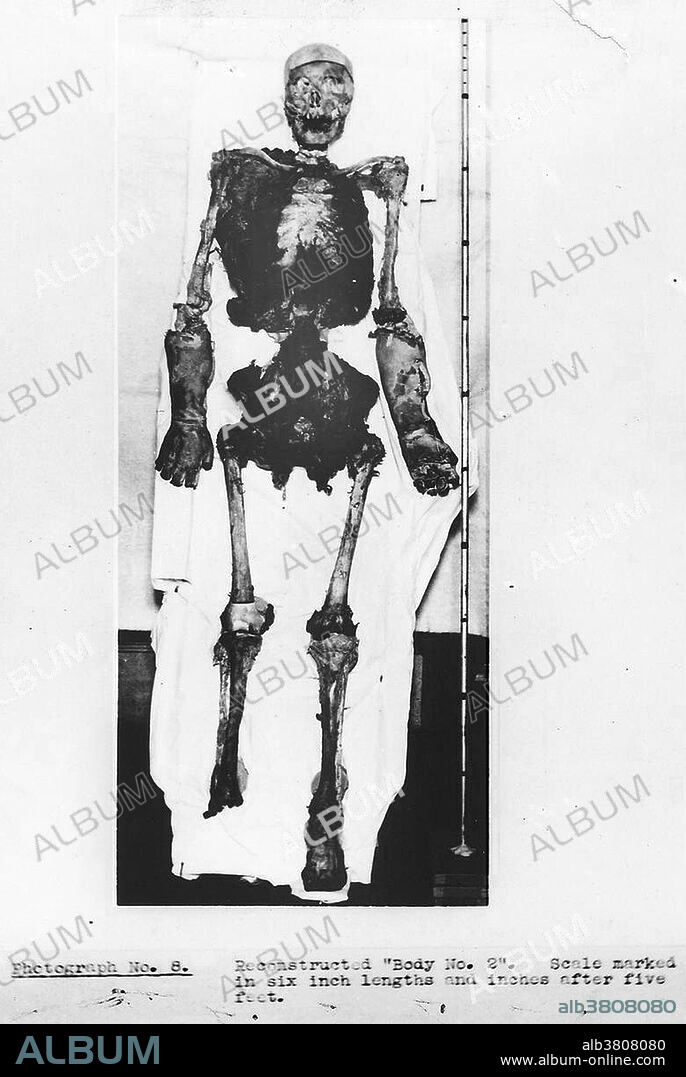alb3808080
Skeletal Reconstruction, Buck Ruxton Murder

|
Add to another lightbox |
|
Add to another lightbox |



Buy this image.
Select the use:

Title:
Skeletal Reconstruction, Buck Ruxton Murder
Caption:
Isabella Ruxton reconstructed body no. 2, 1935. Because the body parts of the two victims were jumbled and had to be reassembled, newspapers called the case the "Jigsaw Murders." Buck Ruxton (1899-1936) was a Parsi doctor and murderer who strangled his wife Isabella. In order to prevent their housemaid, Mary Jane Rogerson, from discovering his crime before he could dispose of the body, he suffocated her too. Ruxton then proceeded to dismember and mutilate both bodies to hide their identities. The case is remembered now for the innovative forensic techniques employed in solving it. The bodies were identified using the fledgeling techniques of fingerprint identification, forensic anthropology to superimpose a photograph over the X-ray of a victim's skull and forensic entomology to identify the age of maggots and thus the approximate date of death. This was one of the first cases where such forensic evidence was successfully used to convict a criminal in the United Kingdom.
Credit:
Album / NLM/Science Source
Releases:
Model: No - Property: No
Rights questions?
Rights questions?
Image size:
2700 x 4033 px | 31.2 MB
Print size:
22.9 x 34.1 cm | 9.0 x 13.4 in (300 dpi)
Keywords:
1930S • 1935 • 1936 • 20 20TH XX XXTH TWENTIETH CENTURY • 20 XX TWENTIETH CENTURY • 20TH CENTURY • 20TH • BUCK RUXTON • CASE • CONVICTION • COURT OF LAW • CRIME • CRIMINAL INVESTIGATION • DEATH BY STRANGLING • EVIDENCE • FEMALE • FIELD • FORENSIC • GUILTY • HISTORICAL • HISTORY • HUSBAND • IDENTIFY • INVESTIGATE • ISABELLA RUXTON • JIGSAW MURDERS • KILL • KILLING • KILLS • LAW ENFORCEMENT • LEGAL SYSTEM • MEDICAL EXAMINER • MEDICAL • MEDICINAL • MEDICINE • MURDER • POLICE • RE-ASSEMBLE • RECONSTRUCTION • RESEARCH • RUXTON • SCIENCE • SKELETON • SPOUSE SKELETAL • STRANGLE • STRANGLING (TO DEATH) • STRANGLING • STUDY • TRIAL • TWENTIETH CENTURY • VICTIM • VICTIMS • WIFE • WOMAN
 Pinterest
Pinterest Twitter
Twitter Facebook
Facebook Copy link
Copy link Email
Email
